|
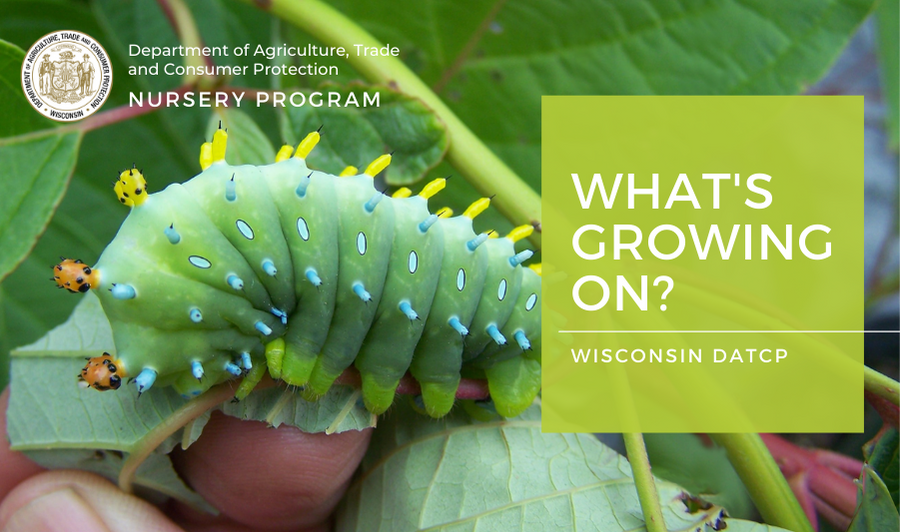 _____________________________________
Dear Wisconsin nurseries, Christmas tree growers, and gardeners:
As the active growing season winds down, the treatment windows for active pests and diseases are closing. Growing degree days (GDD)(simple B50) as of October 12 were 1921 in Bayfield, 2161 in Medford, 2264 in Wausau, 2612 in Hancock, 2732 in Green Bay, 2812 in Racine, 3003 in Madison, and 3094 in La Crosse.
Take a moment to read through a few updates from the DATCP Nursery and other Plant Protection programs. Please send any feedback, questions, or ideas for future e-news updates to datcpnursery@wisconsin.gov.
Having trouble viewing this email? View it as a Web page.
_____________________________________
|
|
 Spotted lanternfly adults and egg mass | Richard Gardner, Bugwood.org
|
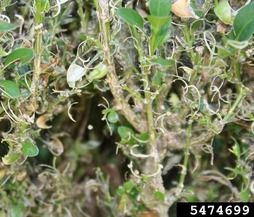 Box tree moth damage on boxwood | Ferenc Lakatos, University of Sopron, Bugwood.org
|
|
|
Spotted lanternfly (SLF) (Lycorma delicatula) was confirmed in Cook County, Illinois on September 26, 2023. Illinois is the 16th state where SLF has been found. SLF has also been found in Connecticut, Delaware, Indiana, Maryland, Massachusetts, Michigan, New Jersey, New York, North Carolina, Ohio, Pennsylvania, Tennessee, Rhode Island, Virginia, and West Virginia.
Spotted lanternflies are invasive and can be spread long distances by people who unknowingly move infested material or items containing egg masses. SLF feeds on a wide range of fruit, ornamental, and woody trees, with tree-of-heaven being one of their preferred hosts. It can be a pest in orchards, as well as in other fruit and ornamental businesses, and has also proven to be a nuisance pest in residential areas.
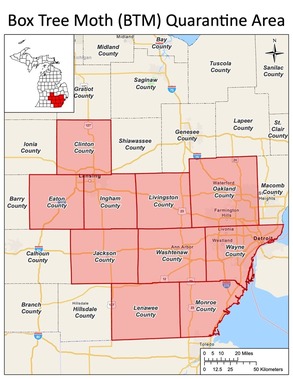
Box tree moth (BTM) (Cydalima perspectalis) was first detected in the U.S. in Niagara County, New York in 2021. In 2022, it was confirmed to be in Lenawee County, Michigan. In June 2023, it was confirmed in Ohio near the border of Hamilton and Clermont counties. And as of August 2023, the BTM quarantine in Michigan has been expanded to 10 counties.
The insect is native to East Asia and has become a serious invasive pest of boxwood plantings and the horticulture industry in Europe and Canada, where it continues to spread. The caterpillars feed mostly on boxwood, and heavy infestations defoliate, and can eventually girdle and kill, host plants.
If you think you see any sign of SLF in Wisconsin, report it right away online. If you think you spot BTM in Wisconsin, email or call our pest hotline at datcppesthotline@wi.gov or (866) 440-7523.
|
_____________________________________
|
|
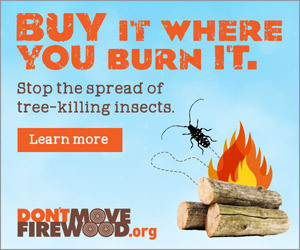
October is National Firewood Awareness Month, a good time to remember to prevent the spread of damaging invasive species by following state firewood requirements when obtaining wood for campfires.
The following Wisconsin firewood rules apply to the movement of firewood into and/or within the state:
- Wisconsin prohibits the movement of uncertified firewood from any areas that are under quarantine for regulated forest pests including thousand cankers disease, Asian longhorned beetle, spongy moth, and mountain pine beetle.
- The Wisconsin DNR’s permanent rule prohibits the entry of uncertified firewood onto DNR-owned properties if it originated more than 10 miles from the property.
- Campgrounds often have additional restrictions on the use or movement of firewood. For example, Chequamegon-Nicolet National Forest prohibits the possession, storage, or transport of uncertified firewood that originates more than 25 miles from your campsite. Also, if moving firewood into or through Tribal properties, contact the tribe for their policies.
To protect forest resources from harmful pests, find out the rules at your destination before bringing firewood and visit Wisconsin’s Firewood Rules and Resources page for state-wide details. When in doubt, buy it where you burn it. To find local firewood vendors in Wisconsin, visit Firewood Scout or Certified Firewood Dealers in Wisconsin.
Help protect the places you love by making one of these three safe firewood choices:
- Buy firewood near the place you’ll burn it.
- Buy certified firewood (look for a state or federal seal) that is produced using processes that help assure the firewood is pest-free.
- Gather firewood on site when permitted.
|
_____________________________________
|
|
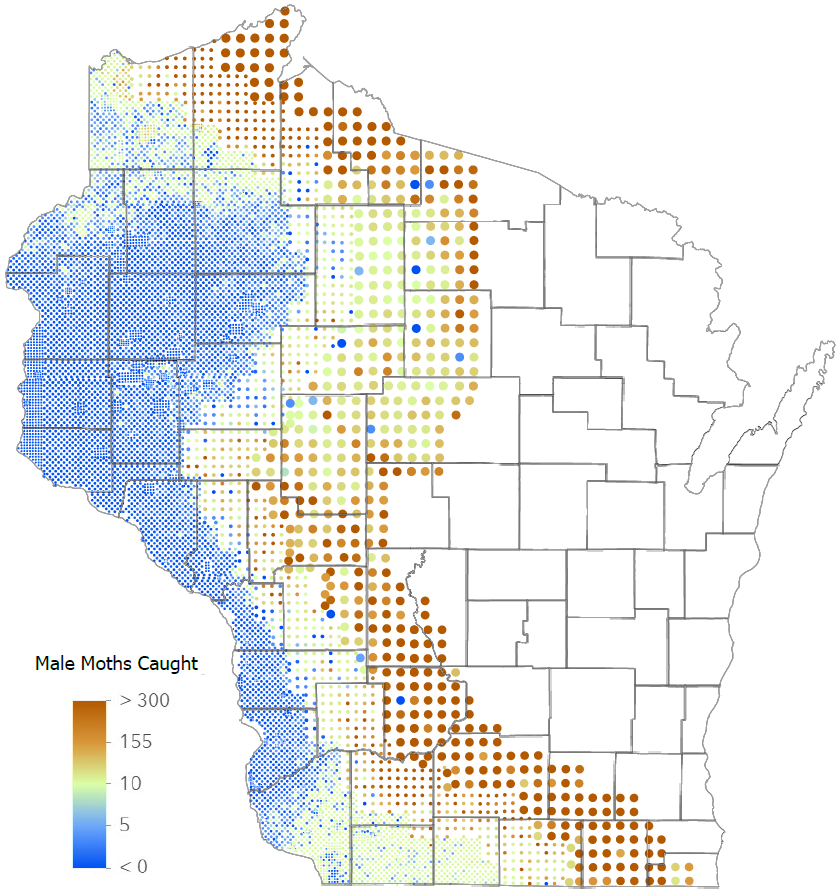 2023 spongy moth trap catches. Sites with male moth catch >300 have the potential for defoliation | DATCP A. Miller
In 2023, the Wisconsin Spongy Moth Program set 9,733 traps in 48 counties spanning central to western Wisconsin. All counts to follow are unofficial, as final data is still coming in.
Total male spongy moth catches increased throughout Wisconsin, marking a fourth consecutive year of population growth. Preliminary analyses of trapping sites indicate a statewide male moth catch of 397,442, which is approximately twice as many moths as were caught last year and four times as many as were caught in 2021. The majority of these trap catches were recorded in the central and eastern parts of the state, which have historically experienced spongy moth infestations.
These patterns reflect an outbreak phase that has been building since an exceptionally low population was recorded in 2019. Such outbreaks are typical approximately every ten years in areas infested with spongy moth, and usually persist for two to four consecutive years before populations collapse.
Follow up egg mass surveys have just started and will be continuing over the next few weeks. These will help determine if unusually high trap counts in historically uninfested areas of southwestern and northwestern Wisconsin reflect the westward spread of persistent populations or a spillover of transient male moths from more heavily infested areas to the east.
|
|
_____________________________________ |
|
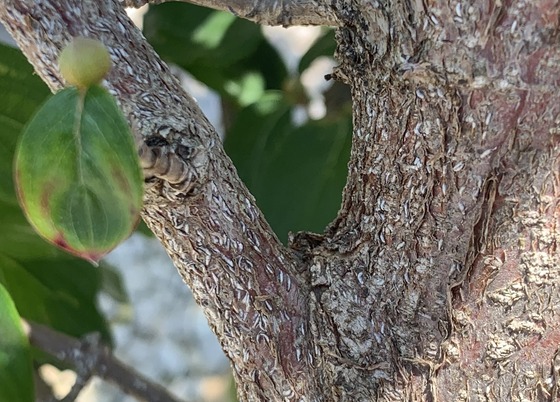 Japanese maple scale on Cornelian cherry (Cornus mas) 'Golden Glory' | DATCP Contributor image
Last month, one of our inspectors was contacted by a nursery in their territory who had been scouting the finished stock they received from an out-of-state supplier and observed a scale on Cornelian cherry (Cornus mas) 'Golden Glory' they were not familiar with. The inspector collected a sample and submitted it to be identified by the entomologist at our Plant Industry Laboratory. The scale was identified as exotic Japanese maple scale (JMS) (Lopholeucaspis japonica, family Diaspididae).
The scale's known host range includes trees and shrubs in more than 16 genera in 13 families, including Acer, Amelanchier, Camellia, Carpinus, Cercis, Cladrastis, Cornus, Cotoneaster, Euonymus, Fraxinus, Gledistia, Hamamelis, Ilex, Itea, Ligustrum, Magnolia, Malus, Oxydendrum, Prunus, Pyracantha, Pyrus, Rosa, Salix, Spirea, Stewartia, Styrax, Syringa, Tilia, Ulmus, and Zelkova. This is not a complete list and it's likely there are other woody ornamental hosts.
Female and nymph JMS are lavender-colored and found beneath their off-white, oystershell-shaped covers, which are brown with a thin white coating. In other states where this pest is found, there are typically two generations per year. JMS has a long egg-laying and crawler emergence period, which means it can be difficult to control. Monitoring and treatment need to occur several times a year (and potentially multiple years, depending on the population size) to be effective.
While this non-native pest has been detected in Wisconsin before, because it is difficult to control and is not widely established, the stock was rejected and ordered to be destroyed or returned to the supplier.
_____________________________________
|
|
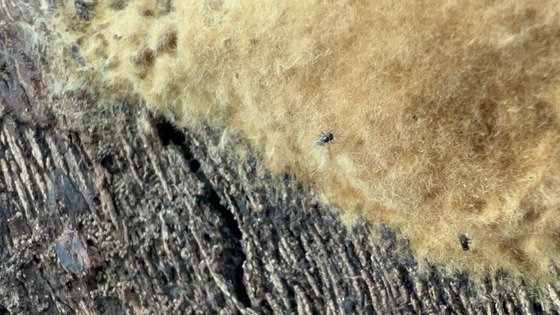 Two tiny parasitic wasps on a fresh spongy moth egg mass in a Christmas tree field | DATCP L. Meils
This is the second in a series of articles to focus on the natural predators of many of the common pest species found in nurseries and Christmas tree fields.
Natural predators can be great allies in our work of controlling invasive pest species. Take the spongy moth, a prominent introduced and unwanted moth that defoliates trees (especially oaks). Because this pest has been in the U.S. since the late 1800s, many universities and government entities have done a lot of work identifying natural predators to help control spongy moth populations. Some of these natural predators were introduced as a form of biocontrol. Biocontrol is the use of other living organisms for the control of pest species. Other natural predators are native to Wisconsin and have adapted to consuming spongy moth as a food source. Here are just a few examples of species that are involved with spongy moth control.
- Predatory beetle (Calosoma sycophanta), an introduced predatory beetle that specializes in the hunting of spongy moth. Adults feed primarily on spongy moth larva while immature beetles will predate spongy moth pupa.
- Fungus (Entomophaga maimaiga), a fungal infection that kills spongy moth larva. This pathogen was introduced in the early 1900s, and while it has been spread though human intervention, it's also spread naturally with spongy moth. This fungus is heavily dependent on wet spring weather conditions to thrive and spread, so its effectiveness varies year to year.
- Virus (Nucleopolyhedrosis virus) (NPV), a virus that specifically infects spongy moth caterpillars. It attacks young caterpillars' internal organs, eventually killing them and leaving them hanging on the sides of trees in an upside down "V" shape. Like the fungus, the ability of NPV to spread is weather dependent.
- Parasitoid wasp (Ooencyrtus kuvanae), a small, introduced wasp that will parasitize the egg masses of spongy moth. They lay their eggs on the moth’s eggs, eventually leading to the wasp’s larva consuming the moth egg. They have spread naturally through Wisconsin along with their spongy moth host, but because of their small ovipositors (part of the insect used for laying eggs), they can only reach about 30% of eggs.
- Deer mice (Peromyscus maniculatus), a native predator of spongy moth larva and pupa. These rodents can have a significant impact on spongy moth populations when in high abundance. Deer mice are dependent on having the appropriate habitat, so their effective can vary based on the level of human disturbance.
While it is helpful to have these natural predators at work in your nursery or Christmas tree field, it is still ultimately the grower's responsibility to ensure the spongy moth population is controlled in your fields and no viable spongy moth life stages are moved outside the quarantine.
_____________________________________
|
|
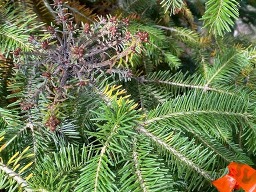 Broom rust on balsam fir found throughout the state | DATCP L. Meils
|
 White pine blister rust on white pine found throughout the state | DATCP L. Meils
|
|
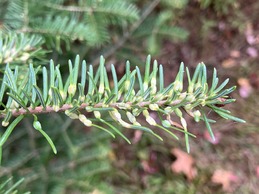 Balsam gall midge on balsam fir found throughout the state | DATCP K. Jerabek
|
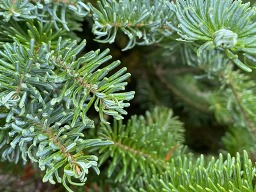 Balsam twig aphid damage on balsam fir found throughout the state | DATCP image
|
|
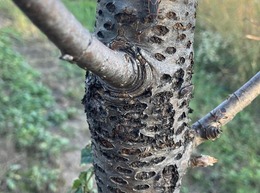 Yellow-bellied sapsucker damage on mountain ash found in St. Croix County | DATCP K. Jerabek
|
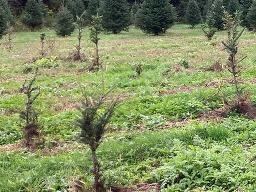 Deer feeding damage to young fraser firs found throughout the state | DATCP G. Meysembourg
|
|
|
_____________________________________
|
|
|
|
|